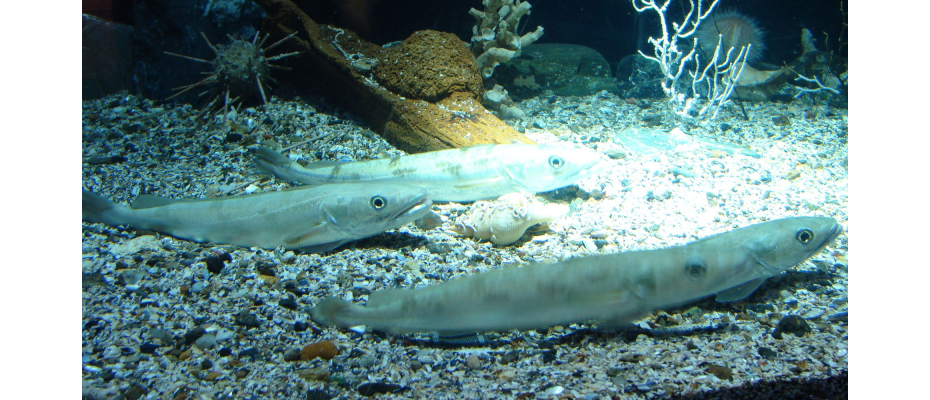
- A new study published in the scientific journal G3 reveals, for the first time, the factors that determine the sex of the European hake, one of the most iconic species in our gastronomy.
- Through genome sequencing, a research team from USC, CSIC, and CNAG concludes that the sex-determining gene is homologous to that of mammals.
- The recent discovery opens the door to a simple and cost-effective tool to identify the sex of hake, contributing to the sustainable management of its fisheries.
The European hake (Merluccius merluccius), one of the most emblematic icons of our cuisine, is also one of the most important marine resources in Spain and across much of Europe. Its wide habitat range, from the Mediterranean Sea to the northeastern Atlantic Ocean, and from the coasts of Norway and Iceland down to the Gulf of Guinea, has made it a commercially valuable species. However, decades of intensive fishing pressure have led to it being considered overexploited. Gaining a deeper understanding of its biology and genetics is key to improving its management and ensuring long-term sustainability.
A research team from the University of Santiago de Compostela (USC), the Marine Research Institute (IIM-CSIC), and the Centre Nacional de Análisis Genómico (CNAG) has identified the mechanism that determines the sex of this species by assembling its genome. This information “will be highly useful for managing European hake fisheries in the context of climate change, where non-invasive sex identification tools are essential,” explain Paulino Martínez, Professor of Genetics at USC, and Fran Saborido from CSIC, lead authors of the study published in the journal G3: Genes | Genomes | Genetics by Oxford Academic.
Hake is a gonochoristic species, meaning there are both male and female individuals, and this difference is highly visible since females reach larger sizes and weights than males. Having access to an accessible tool to determine sex would be a major step forward for fishery management, particularly given the size-based fishing bias and the problems linked to sex reversal caused by marine pollutants and rising temperatures due to climate change.
 Sex determination in fish: more than a genetic matter
Sex determination in fish: more than a genetic matter
Unlike mammals and birds, which have a highly conserved genetic sex determination system, fish exhibit a great diversity in how sex is determined, and it can be influenced by environmental factors such as temperature. To date, up to 27 different genes involved in sex regulation have been identified in fish, with variations even within the same family. This is the case for flatfish (order Pleuronectiformes), in which six different sex-determining genes have been identified (for example, sox2 in turbot and fshr in sole).
In addition to genetics, there are species where sex is determined by environmental factors such as temperature or social context. In others, such as sequential hermaphrodites, individuals may be born male and later become female, or vice versa. These many variables and mechanisms are becoming increasingly understood by the scientific community, thanks to rapid advances in sequencing and bioinformatics technologies that allow for the generation of chromosome-level reference genomes for the species.
It is precisely through the hake’s DNA map that the reasons why some individuals develop as females and others as males have been uncovered. In this study, carried out in collaboration with CNAG, USC, IIM-CSIC, and the Oceanographic Institute of Vigo (IEO), the hake genome was assembled into 21 chromosomes, corresponding to its karyotype, reaching a total size of 715 million base pairs (Mb). A total of 26,625 protein-coding genes were annotated. It is a relatively small genome, roughly four times smaller than the human genome (3,000 Mb), but with only two fewer chromosomes than humans and a similar sex-determining mechanism.
According to Dr Tyler Alioto, leader of the Genome Assembly and Annotation Team at CNAG and author of the study: "Until now, it was a complete mystery how this well-known species determines its sex. Thanks to advanced sequencing techniques, we’ve uncovered key information that will decisively support its conservation and protection."
Using this reference genome, researchers compared the full DNA of five males and five females to look for sex-related differences. This led to the identification of a region on chromosome 9 of approximately 10 Mb, containing several genes involved in the development of reproductive organs. In particular, very close to the sox3 gene (a homologue of the mammalian SRY gene), researchers identified very small genetic variations (single-base changes in the DNA known as SNPs, Single Nucleotide Polymorphisms). These differences revealed a clear pattern: males were heterozygous (carrying two different gene versions), and females were homozygous (carrying two identical copies). This finding suggests an XX/XY sex determination system, like that of humans, and was later confirmed with a much larger sample of individuals of both sexes.
IMAGES
Photo 1. – Merluccius merluccius (European hake) at the Maremagnum Hall of the Aquarium Finisterrae, in A Coruña, Galicia, Spain. Author: Fernando Losada Rodríguez. Licence: CC BY-SA 4.0.
Photo 2. – Researchers from the Centro Nacional de Análisis Genómico (Fernando Cruz, Tyler Alioto, and Jèssica Gómez).
REFERENCE ARTICLE
Martínez, Paulino, et al. «Screening a New European Hake ( Merluccius Merluccius ) Chromosome-Level Genome Assembly Suggests an XX/XY Sex-Determining System Driven by the SRY-Box Transcription Factor 3 ( Sox3 )». G3: Genes, Genomes, Genetics, editado por C Palaiokostas, junio de 2025, p. jkaf127. DOI.org (Crossref), https://doi.org/10.1093/g3journal/jkaf127.











